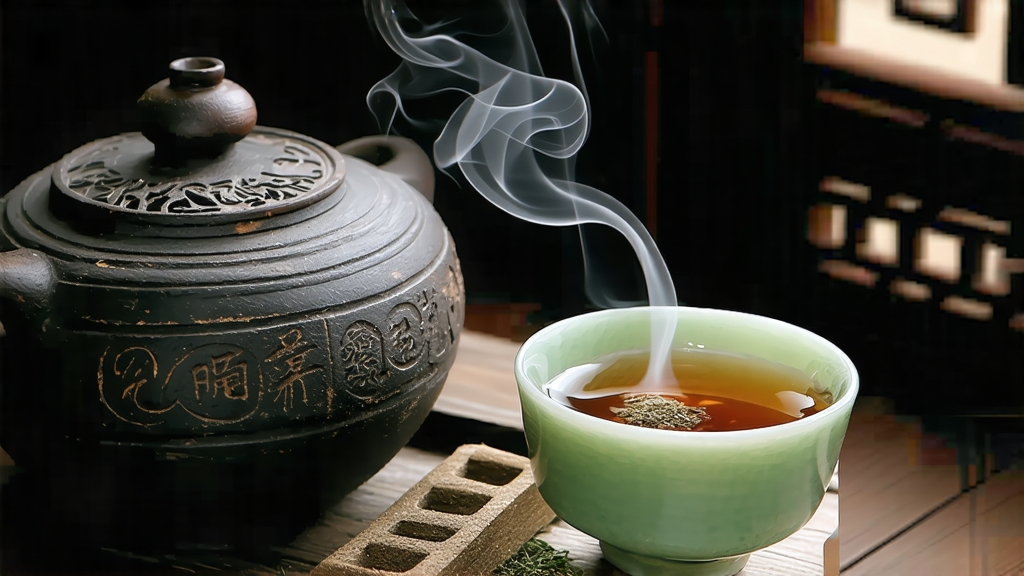
Tucked away in the subtropical hills of southern China, Liu Bao tea has quietly matured for more than 1,500 years, yet it remains the best-kept secret of the dark-tea family. While Pu-erh commands auction headlines and Fu bricks dazzle with their golden “flowers,” Liu Bao drifts like a mellow bass note beneath the symphony of Chinese post-fermented teas. To the international palate, its layered sweetness, camphor coolness and lingering betel-nut finish can feel like discovering an unknown cousin of single-malt whisky—earthy, resinous, yet astonishingly smooth.
Historical footprints
Liu Bao takes its name from the old Liu Bao township of Cangwu County, Guangxi Zhuang Autonomous Region. During the Qing dynasty, the town served as the last navigable port on the Wuzhou section of the Xun River; beyond it, rapids blocked further tea transport. Caravans from Yunnan, Guizhou and western Guangxi converged here, pressing their rough teas into tight bamboo baskets and loading them onto flat-bottomed boats bound for Guangzhou and Hong Kong. From the late 17th century onward, these teas—collectively called “Liu Bao” regardless of their precise hillside origin—were floated downriver, trans-shipped to clipper vessels, and carried across the South China Sea to work-stained miners in Kuala Lumpur and Singapore. Labourers believed the tea dispelled humidity, cooled internal heat and prevented malaria; dockside apothecaries sold it by the slab. By 1801 the Qing imperial court listed Liu Bao as one of the “Xixiang teas” eligible for tribute, and in 1886 the British colonial government of Hong Kong recorded its first import duty entry for “Liu-pu” (an old romanisation) at 0.25 HK$ per picul. Thus, long before the concept of “dark tea” (hei cha) was codified in 1957, Liu Bao had already become a transnational commodity, a daily digestive for dockers and a courtly gift for mandarins.
Micro-terroirs within Guangxi
Today the protected geographical indication covers the entire Wuzhou prefecture, but connoisseurs distinguish at least four micro-terroirs. The original Liu Bao village itself—now a cluster of terraced gardens at 300–500 m elevation—produces the most aromatic leaf, kissed by morning mist off the Qilian range. Further south, Tashan town gives a darker, more tannic liquor prized for long aging. Along the limestone corridor of Tengxian County, the high-mineral soil yields a lighter, orchid-tinged style, while the subtropical lowlands around Cenxi push forth broad leaves that develop the signature betel-nut note after repeated wet-piling. Each terroir is dominated by the Guangxi large-leaf cultivar (Camellia sinensis var. sinensis f. macrophylla), whose fat buds and thick cell walls provide the polyphenolic fuel for post-fermentation.
Crafting Liu Bao: the bamboo-basket alchemy
Although Liu Bao is often lumped together with “wet-piled” teas, its choreography of microbes is distinct. The journey begins in late April, when two leaves and a bud are plucked under the pre-monsoon sun. After withering on bamboo mats for 3–4 hours, the leaves are wok-fired at 280 °C for eight minutes—long enough to kill green enzymes but brief enough to preserve leaf integrity. Rolling follows the ancient “dragon-&-phoenix” pattern: 25 minutes of light pressure to bruise margins without shredding veins. The twist is the sha qing (kill-green) temperature curve: tea masters aim for a residual moisture of 58 %, slightly higher than Pu-erh, to leave more substrate for later bacteria.
Next comes the pile-fermentation, locally called “wo dui,” yet done in smaller 250 kg heaps rather than the 5-ton Pu-erh mountains. A mist of Xun River water is sprayed every 90 minutes while the pile is covered with jute sacks; thermometers are inserted like acupuncture needles. Over 10–12 hours the core temperature climbs to 55 °C, activating Bacillus subtilis and Aspergillus niger strains that convert catechins into theaflavins and gallic acid. When the leaf edges turn chestnut-brown and a faint sticky-sweet aroma emerges,